
The governor of South Carolina is the head of government of South Carolina. The governor is the ex officio commander-in-chief of the National Guard when not called into federal service. The governor's responsibilities include making yearly "State of the State" addresses to the South Carolina General Assembly, submitting an executive budget, and ensuring that state laws are enforced.

The Citadel Military College of South Carolina is a public senior military college in Charleston, South Carolina, United States. Established in 1842, it is the third oldest of the six senior military colleges in the United States. The Citadel was initially established as two schools to educate young men from around the state, while simultaneously protecting the South Carolina State Arsenals in both Columbia and Charleston.

Hugh Smith Thompson was the 81st governor of South Carolina, from 1882 to 1886.

Charleston, South Carolina, played a pivotal role at the start of the American Civil War as a stronghold of secession and an important Atlantic port for the Confederate States of America. The first shots of the conflict were fired there by cadets of The Citadel, who aimed to prevent a ship from resupplying the U.S. Army soldiers garrisoned at Fort Sumter. Three months later, a large-scale bombardment of Fort Sumter ignited a nationwide call to quell the rebellion. U.S. Army and Navy troops made repeated, concerted efforts to degrade the city fortifications throughout the war. Still, they would only retake control over and liberate the city in the conflict's final months. The prolonged struggle substantially damaged the city.

Columbia, the capital city of South Carolina, was an important political and supply center for the Confederate States Army during the American Civil War. Much of the town was destroyed during occupation by Union forces under Major General William T. Sherman during the Carolinas Campaign in the last months of the war. Sherman was accused of having deliberately and needlessly burned the city, which he denied. Modern historians say that multiple causes were responsible.

This history of the University of South Carolina began in the 18th century when intersectional differences arose between the Lowcountry and the Upstate. It was conceived that a state supported college located in the center of the state at Columbia, South Carolina, would foster friendships between those of both regions thus allowing the state to present a united front to the nation when threatened with issues jeopardizing the South Carolina way of life. The University of South Carolina's history can be described in four distinct phases: a firebrand college (1801–1862), constant reorganization (1865–1891), college to university (1891–1944) and the state's university (1944–present).
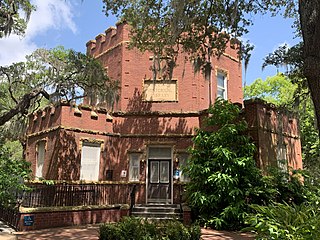
The Charleston Arsenal was a United States Army arsenal facility in Charleston, South Carolina, seized by state militia at the outbreak of the American Civil War.
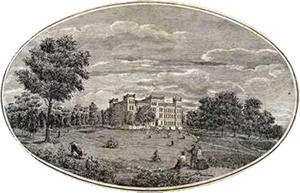
Louisiana State Seminary of Learning & Military Academy was the former name of the current university now known as Louisiana State University (LSU).
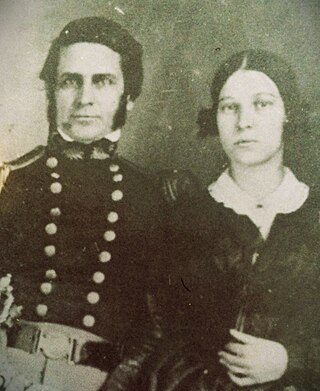
Richard Woodward Colcock was the second Superintendent of the South Carolina Military Academy from 1844 through 1852.
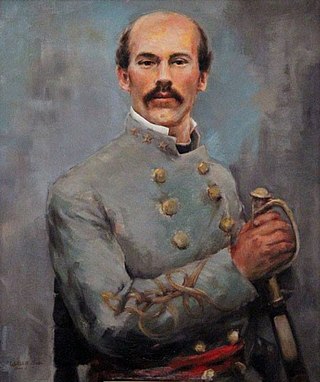
Charles Courtenay Tew was a colonel in the Confederate States Army and was killed in action at the Battle of Antietam during the American Civil War.

The Battle of Tulifinny was a military engagement of the American Civil War that was fought from December 6–9, 1864 in Jasper County, South Carolina during Sherman's March to the Sea. Outnumbered five-to-one, a Confederate force led by Major-General Samuel Jones, consisting in part of the entire cadet corps of the South Carolina Military Academy, successfully defended a strategically important section of the Charleston and Savannah Railway from attacks by Union forces. The engagement was one of the rare occasions when the United States Marine Corps fought in combat during the conflict.

The South Carolina State Arsenal in Charleston, South Carolina was built in 1829 in response to the alleged 1822 slave revolt led by Denmark Vesey. The alleged uprising never came to fruition and Vesey was publicly hanged in 1822. In 1842 the South Carolina Military Academy, a liberal arts military college, was established by the state legislature, and the school took over the arsenal the following year as one of 2 campuses, the other being the Arsenal Academy in Columbia, South Carolina. The school became known as the Citadel Academy because of the appearance of its building. From 1865 to 1881, during Reconstruction, Federal troops occupied the Citadel, and the school was closed. Classes resumed in 1882 and continued in this building until the school was relocated to a new campus on the banks of the Ashley River in 1922.
The President of The Citadel is the chief administrator of The Citadel. Previously known as the Superintendent, the title was changed in 1921 during the tenure of Colonel Oliver J. Bond.
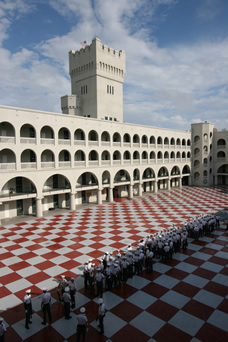
The History of The Citadel began in the early 1820s with the formation of a militia and state arsenal in response to an alleged slave revolt in 1822. By 1842 the arsenal grew into an academy, with the Legislature establishing it as the South Carolina Military Academy. Cadets played a key role in the Civil War by assisting in the battalion firing upon a federal ship three months before the war began. Many Confederate officers attended the school. Renamed in 1910 as The Citadel, the school's academic reputation grew. After moving the campus near Hampton Park in 1922, the college has grown substantially. In 1969, graduate student Maxine Hudson became the first woman to earn a degree from The Citadel. The Citadel saw the graduation of its first Black student, Charles D. Foster in 1970, 16 years after legal segregation ended in public schools. Following a rocky journey, The Citadel graduated its first female Cadet, future congresswoman Nancy Mace, in 1999. The school has produced many military officers, business, and political leaders throughout its history.

The campus of the Citadel Military College of South Carolina consists of a 300-acre (120 ha) space adjacent to Hampton Park in Charleston, South Carolina. It has been home to the Citadel Military College of South Carolina since 1922 when the school moved from its location on Marion Square, including the Old Citadel. Arranged with the primary buildings surrounding a central 10-acre (4 ha) parade ground, it consists of barracks for the Corps of Cadets, academic buildings, a mess hall, chapel, library, athletic and recreational facilities, support buildings, and housing for faculty and staff.

The Arsenal Academy was a military academy in Columbia, South Carolina, originally established in 1842 as an independent school by the state of South Carolina. In 1845, the academy became a component of the South Carolina Military Academy, in which first year cadets underwent their initial year of training before completing their studies at the larger Citadel Academy in Charleston, South Carolina. The school was burned by Sherman's forces in 1865 and never reopened.

Peter Fayssoux Stevens was an American soldier, educator and clergyman. He was an officer in the Confederate States Army and a bishop in the Reformed Episcopal Church who also served as 4th superintendent of the South Carolina Military Academy.

Colonel John Peyre Thomas Sr. was an educator, politician and historian who served as 6th Superintendent of the South Carolina Military Academy.
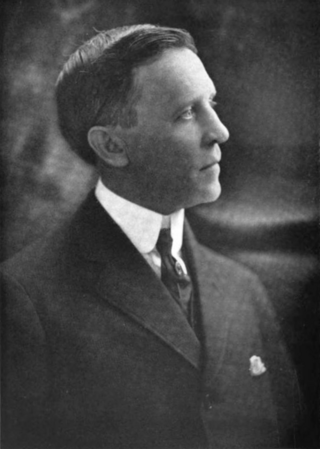
Colonel Oliver James Bond, South Carolina Militia was an American educator and college administrator who served as both Superintendent and President of The Citadel from 1908 to 1931.
The Daniel Library is the main library of The Citadel, and is located on the college's Charleston, South Carolina campus. The library holds approximately 180,000 volumes in addition to extensive digital collections.

















